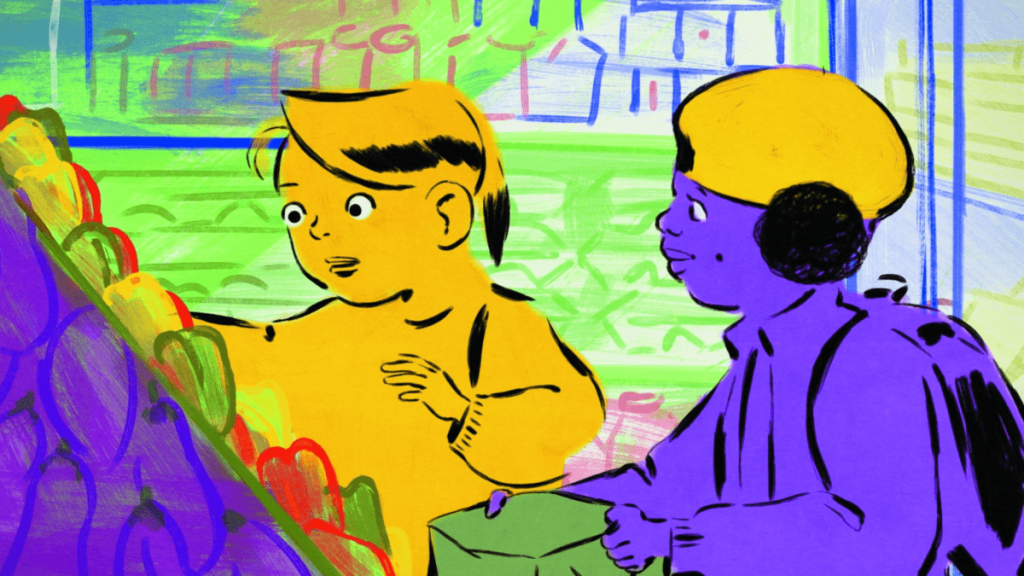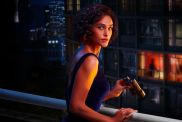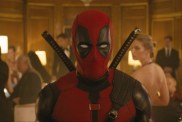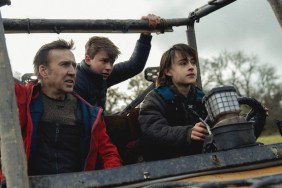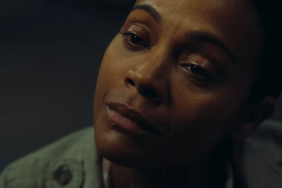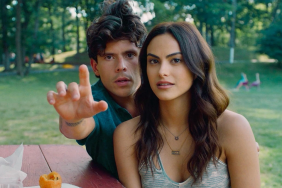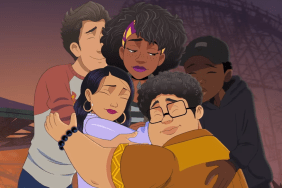ComingSoon Senior Editor Spencer Legacy spoke with Chicken for Linda! writers and directors Chiara Malta and Sébastien Laudenbach about the animated movie. The duo spoke about the color choices utilized throughout the film and what it was like to work with the children who provided many of the voices. Chicken for Linda! is now playing at Los Angeles’ Laemmle Royal and will have a wider theatrical release across the United States starting on April 15, 2024.
“Paulette feels guilty after unjustly punishing her daughter Linda and would do anything to make it up to her,” the movie‘s synopsis reads. “Linda immediately asks for a meal of chicken with peppers, which reminds her of the dish her father used to make. But with a general strike closing stores all across town and pushing people into the streets, this innocent request quickly leads to an outrageous series of events that spirals out of control, as Paulette does everything she can to keep her promise and find a chicken for Linda.”
Spencer Legacy: There are a lot of fun and lighter moments in the story, but the core story about Linda and her parents is very touching. How did you decide on having chicken and this meal as the focal point of this emotional story?
Chiara Malta: Melancholy is even more powerful when it’s hiding behind laughter. A dish that brings up a memory … I think that’s something that happened to everybody — a whole sensory aspect to it. There’s the memory and the taste — that’s the most moving. It was interesting for us to choose the chicken, because there was a challenge for the children to understand you had to kill it in order to eat it. It’s a recipe that touches me because it’s a dish that my grandmother used to make for me when I was a child. I never had to kill the chicken to eat it, though. [Laughs].
That’s good, then. [Laughs]. The children feel very realistic in the movie. They might misbehave or get into mischief, but it’s always because they’re curious or still learning and young. How did you go about writing their dialogue so accurately and like real kids?
Sébastien Laudenbach: We wrote the dialogue together. Maybe the sense of life comes from the fact that Chiara wanted to build up a real set and we start with the sound. So without any drawings, we set up a real cinema set with all the actors together and objects made of foam in order to not make any noise. It gave us a real truth and a first sense of life. It’s like real life. And starting from this sound, we were very free with the animation and the drawings. As the sound is very realistic, it was easy to liberate the drawings and the lines.
Malta: We wanted to have something quick in the dialogue where the lines would really go quickly, because when we talk to children, we have to talk slow with a silly voice. Like, we want it to be very realistic, the way it would happen in real life. Right.
Laudenbach: Yeah, like, “Goo goo.” [Laughs]. No, we wanted to speak truly.
Similarly, the voice actors for the children are so great.
Laudenbach: They’re real children, too.
Malta: Yeah. They’re real children. In animation, sometimes adults play children, but for this, it was children. We decided to work with a casting director who specialized in children, and, like we did for the adults, we wanted to work with actors, not with voices. We didn’t make the decisions based on the vocal qualities — we really wanted to work with real actors. We thought if we liked the actor, we could still change the character because we hadn’t started to do the drawing yet.
With the casting of the children with this casting director that specialized in children, they were really asking them who they were and what they liked. We really wanted to work with people, not just voices. It was a real friendship and bond that developed between the girls, because they spent a lot of time together on the set. It was really just like a real-life set.
The music and songs by Clément Ducol are so excellent. How did you both decide on which moments in the story to turn into musical numbers?
Malta: Sometimes we wanted to do a little incursion in the past, because the movie was going so fast that we had to have a little bit of a stop moment to look back on the past. We started to ask ourselves, “What is hidden?” For example, Paulette’s pain, because she’s hysterical with her daughter because she is suffering a lot. The relationship between Astrid and was Paulette was also something that was hidden, because Paulette was so annoying to Astrid when she was a kid. Because Astrid had the responsibility of looking after her little sister — something we can’t see once they became adults.
So Paulette is acting like she did when she was five with her big sister. But it’s another story. Also, the father, because we can’t see him as he’s dead and Linda doesn’t remember him at all.
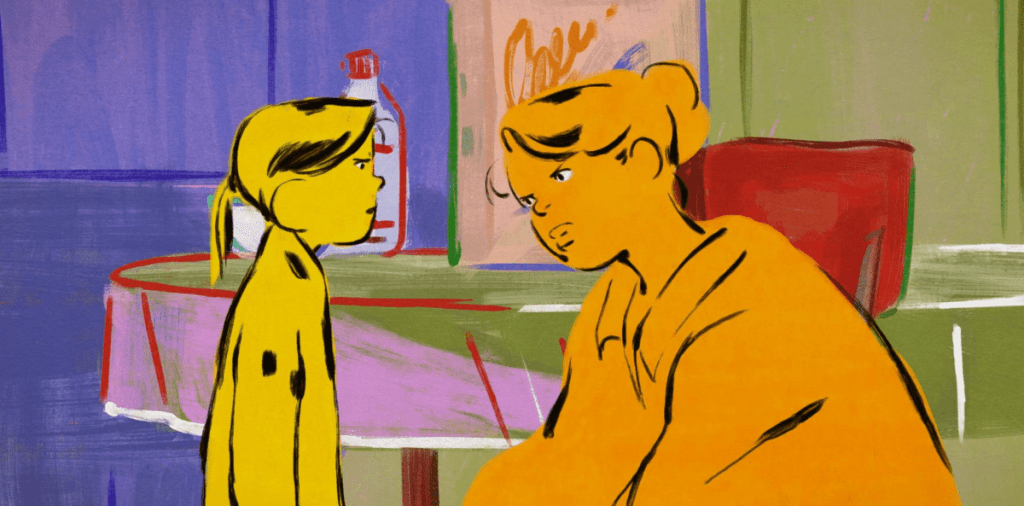
A lot of chaotic things happen in the pursuit of the chicken. What was writing that whole escalating sequence of events like?
Malta: We didn’t want everything to happen just because we were running after a chicken. We wanted to have a bunch of disasters that were more and more unlikely that would accumulate.
For example, we like that movie by Peter Bogdanovich called What’s Up, Doc? There’s a scene in the hotel with a couple that is fighting, and Barbra Streisand is hanging on the window, almost naked. A bunch of firemen come and go to the wrong door at the same time that the TV explodes. There’s a thief that comes and steals his suitcase and a bunch of other people come and everything’s very unlikely. And by the time that Barbara Streisand arrives, there’s someone else that was hiding on another window that was doing the same as her — all because of one suitcase. But it is not about the suitcase in the scene. It was the same for us. All of this was because of a chicken. It was not always about the chicken — it’s just a starting point for the craziness, to unleash it.
Chicken for Linda’s visual style is so distinct and colorful. What was it about this very colorful style that made it such a good match for this story?
Malta: It’s a film that’s full of joy, so we wanted it to be colorful. It’s a film that’s not polite — it’s unruly. So we wanted the color to go outside of the lines. To have one color per character, that brought joy and also liberated the animators to have the lines always the same for the characters and to not to have to respect the model as much. Because we color coded, the faces of the character can change more. They’re more free that way.
Laudenbach: Using this color code is a good way to make a cheaper movie. Making a cheaper movie means you can make it faster as well. You animate and you see your animation, so you’re an actor and a spectator and it’s very quick and it fluid.
Malta: We didn’t want the colorists and animators to spend hours and hours on each drawing. We wanted to go quickly and to be lively also.
When it comes to the colors for each character specifically, how did you decide which would best represent each of them?
Malta: As an example, Linda is yellow because of the sun — it’s joyful. In France, they have these little yellow raincoats for kids, so that was that. Astrid was pink, even though she was not feminine at all, so that was fun for us to do that
Laudenbach: And we worked with family colors. So Linda’s family is yellow, pink, red, and orange. The neighbors are all green and the policemen are blue because all policemen in France wear blue. There’s no specific meaning, it’s only very intuitive.
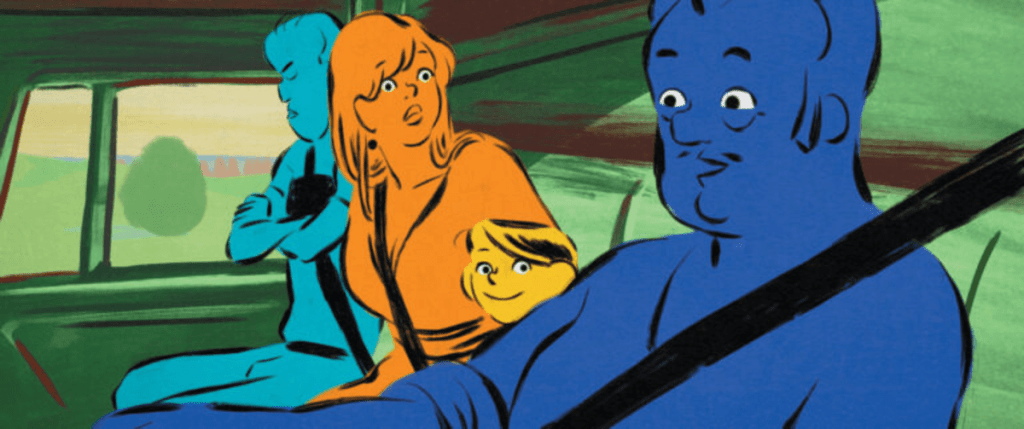
Chicken for Linda! premiered at Cannes last year. What did that mean to both of you, and what was that experience like?
Malta: It was a section of the Cannes Festival that’s less cruel than the others. [Laughs].
Laudenbach: Because there is no competition.
Malta: And the people who come and see the movies are positively inclined. It’s a place for independent cinema and also a place of a lot of discovery of directors, so it was very moving for us to be there. For example, Justine Triet [writer and director of Anatomy of a Fall] was in that section for her first movie, La bataille de Solférino [Age of Panic].
With the movie now releasing in North America and Japan, do you have anything you’d like to say to these international audiences who might want to go see the film in the theater?
Malta: It’s a movie that is unlike any other one other. It mixes tears and laughter and it’s for all audiences and for all ages. It’s a beautiful and funny movie.
